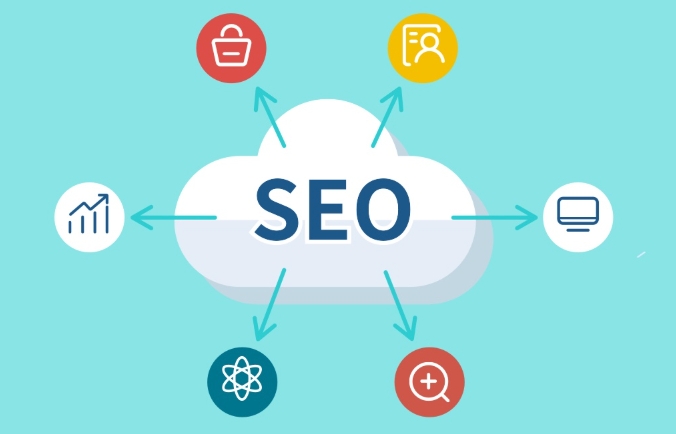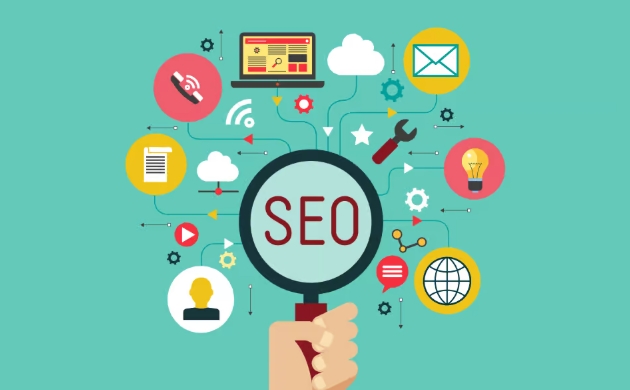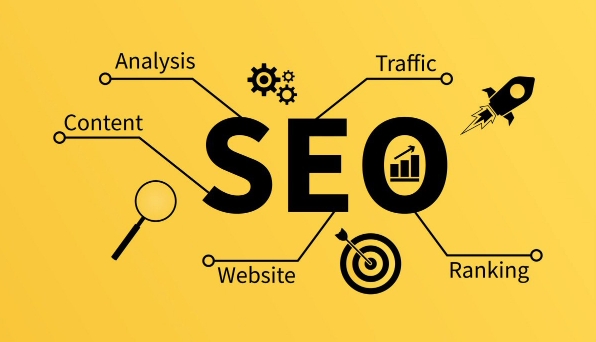Shopify SEO refers to improving ranking in search engines to gain more traffic by optimizing store content and technical settings. 1. On-Page SEO: Optimize product title, description, picture alt text and URL structure to avoid copying manufacturer descriptions, and ensure that the content is original and the keywords are clear. 2. Technical SEO: Improve website loading speed, correctly configure robots.txt and sitemap.xml files, regularly repair dead links, and can be detected with tools or professionals. 3. Content Strategy: Create product-related content such as guides, tutorials or videos, and make internal links to attract target users and increase long-tail traffic.

Shopify SEO is the process of optimizing your Shopify store to rank higher in search engine results pages (SERPs) for relevant keywords. The goal is simple: get more organic traffic from people actively searching for products you sell.

On-Page SEO: Optimize What's Right in Front of Customers
This is where most new Shopify store owners start — and for good reason. On-page SEO includes everything from product titles and descriptions to image optimization and URL structure.

- Product Titles : Should include your main keyword and be described but concise. For example, “Organic Cotton T-Shirt – Soft & Eco-Friendly Unisex Tee” works better than just “Cotton T-shirt.”
- Meta Descriptions : These don't directly affect rankings, but they influence click-through rates. Make them compelling and keyword-friendly.
- Images : Use high-quality images with alt text that describes what the image shows. Alt text helps visually impaired users and give Google more context about your page.
A common mistake is copying manufacturer descriptions. Search engines favor unique content, so take time to write original product descriptions even if it takes longer.
Technical SEO: Fix the Invisible Stuff That Holds You Back
Technical SEO isn't flashy, but it can make or break your site's performance. This part involves improving your store's backend setup so search engines can crawl and index your site efficiently.

Here are a few key points to check:
- Ensure your site loads quickly — especially on mobile. Shopify themes vary in speed, so test yours using tools like PageSpeed Insights.
- Set up a robots.txt file and sitemap.xml correctly so Google knows which pages to index.
- Fix broken links regularly. A 404 error here and there happens, but too many hurt user experience and SEO.
If you're not tech-savvy, consider using an app like Plug in SEO or hiring someone to audit your store once in a while.
Content Strategy: Not Just for Blogs
SEO on Shopify isn't all product pages. Creating helpful content around your products can drive more targeted traffic. Think guides, how-tos, or even videos that answer customer questions.
For example, if you sell hiking backpacks, a post like “How to Choose the Right Hiking Backpack for Multi-Day Treks” could rank well and bring in long-tail traffic.
Also, internal linking matters. Link related products or blog posts together so visitors (and Google) can easily explore more of your site.
That's the basic idea behind Shopify SEO — optimize your content, clean up the technical parts, and create value through content. It's not magic, but done right, it brings steady traffic without paying for ads.
The above is the detailed content of What is Shopify SEO. For more information, please follow other related articles on the PHP Chinese website!

Hot AI Tools

Undress AI Tool
Undress images for free

Undresser.AI Undress
AI-powered app for creating realistic nude photos

AI Clothes Remover
Online AI tool for removing clothes from photos.

Clothoff.io
AI clothes remover

Video Face Swap
Swap faces in any video effortlessly with our completely free AI face swap tool!

Hot Article

Hot Tools

Notepad++7.3.1
Easy-to-use and free code editor

SublimeText3 Chinese version
Chinese version, very easy to use

Zend Studio 13.0.1
Powerful PHP integrated development environment

Dreamweaver CS6
Visual web development tools

SublimeText3 Mac version
God-level code editing software (SublimeText3)

Hot Topics
 Vue3+TS+Vite development skills: how to optimize SEO
Sep 10, 2023 pm 07:33 PM
Vue3+TS+Vite development skills: how to optimize SEO
Sep 10, 2023 pm 07:33 PM
Vue3+TS+Vite development skills: How to perform SEO optimization SEO (SearchEngineOptimization) refers to optimizing the structure, content and keywords of the website to rank it higher in search engines, thereby increasing the website's traffic and exposure. . In the development of modern front-end technologies such as Vue3+TS+Vite, how to optimize SEO is a very important issue. This article will introduce some Vue3+TS+Vite development techniques and methods to help
 Summary of Vue development experience: Practice in solving SEO and search engine optimization
Nov 22, 2023 am 08:44 AM
Summary of Vue development experience: Practice in solving SEO and search engine optimization
Nov 22, 2023 am 08:44 AM
Summary of Vue development experience: Practice in solving SEO and search engine optimization In the current era of rapid development of mobile Internet and Web technology, search engines are still one of the most important ways to obtain information on the Internet. For websites that need to gain high exposure in search engines, SEO (SearchEngineOptimization) is an essential task. So, for web development projects using Vue technology, how to achieve SEO and search engine optimization? Vue
 What is the difference between SEO and SEM
Aug 10, 2023 pm 03:48 PM
What is the difference between SEO and SEM
Aug 10, 2023 pm 03:48 PM
The difference between SEO and SEM is 1. SEO refers to search engine optimization, while SEM refers to search engine marketing; 2. SEO optimizes the visibility of the website so that it naturally ranks in front of organic search results, while SEM uses advertising to Paid ranking at the top of search results; 3. SEO is a long-term strategy, which requires continuous and sustained efforts to maintain the website's ranking in search engines, while SEM can be flexibly adjusted and implemented, and it can quickly adjust the advertising strategy as needed. and budget.
 How Vue performs SEO optimization and practical suggestions
Jun 09, 2023 pm 04:13 PM
How Vue performs SEO optimization and practical suggestions
Jun 09, 2023 pm 04:13 PM
With the continuous development of web technology, more and more websites are beginning to use Vue as the front-end framework. Although Vue can provide a good user experience and development efficiency, there are still some challenges in search engine optimization. This article will introduce how Vue performs SEO optimization and some practical suggestions. 1. Vue’s SEO issues Vue’s SEO issues mainly include the following points: Server-side rendering issues: Vue is a single-page application (SPA), which means that it is rendered in the browser through JavaScript
 SSR technology application practice in Vue 3 to improve the SEO effect of the application
Sep 08, 2023 pm 12:15 PM
SSR technology application practice in Vue 3 to improve the SEO effect of the application
Sep 08, 2023 pm 12:15 PM
SSR technology application practice in Vue3 to improve the SEO effect of applications. With the rapid development of front-end development, SPA (Single Page Application) has become mainstream. The benefits of SPA are self-evident and can provide a smooth user experience, but there are some challenges in terms of SEO (search engine optimization). Since SPA only returns an HTML template in the front-end rendering stage, most of the content is dynamically loaded through JavaScript, causing search engines to have difficulties in crawling, indexing, and ranking. To solve this problem,
 Http status: What is the difference between 301 and 302 jumps? What are the benefits or problems when using it?
Jul 12, 2022 pm 12:22 PM
Http status: What is the difference between 301 and 302 jumps? What are the benefits or problems when using it?
Jul 12, 2022 pm 12:22 PM
What is the difference between 301 jump and 302 jump? The following article will help you compare 301 and 302 jumps, talk about their differences, and what are the benefits or problems when using these two transfers. I hope it will be helpful to you!
 What is a 301/302 redirect? How to redirect the website?
Jul 12, 2022 pm 12:07 PM
What is a 301/302 redirect? How to redirect the website?
Jul 12, 2022 pm 12:07 PM
What is a 301/302 redirect? How to redirect the website? This article will take you through 301/302 jumps, introduce the jump methods, and analyze them from the SEO perspective to see which method is practical. I hope it will be helpful to everyone!
 Optimizing website SEO: practice of pseudo-static hiding php suffix
Mar 07, 2024 pm 12:27 PM
Optimizing website SEO: practice of pseudo-static hiding php suffix
Mar 07, 2024 pm 12:27 PM
As we all know, optimizing the SEO of a website is a very important part of website operation. The default URLs of dynamic web systems (such as PHP) used by many websites have extensions (.php, .html, etc.), which will affect the SEO effect of the website. In order to improve the optimization effect of the website, a common practice is to change the dynamic URL to a pseudo-static URL to hide the extension name and improve the user experience and search engine ranking of the website. This article will take "pseudo-static hidden php suffix" as the theme, introduce how to achieve this optimization in PHP websites, and






